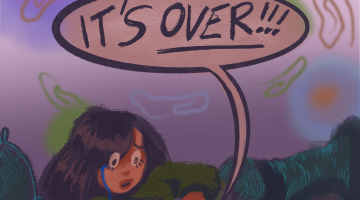Is faster usually better?
With the implementation of 15 to Finish across the state, the Nevada System of Higher Education would say yes.
15 to Finish is a program that encourages students to take 15 credits each semester in order to graduate in four years. The University of Nevada, Reno and NSHE advocate that graduating in four years will help students save money in the long run due to a decrease in student loan debt and shorter time before entering the workforce.
To enforce this idea, the Financial Aid office recently implemented a policy to withhold most institutional scholarships and aid from students not currently enrolled in 15 credits. However, Financial Aid offers an appeals process in which a student can provide proper documentation to justify why they may need to take their 30 credits over a full calendar year to include winter and summer courses.
As colleges continually try to increase graduation rates, the concept of raising the minimum requirement of classes to take per year is inevitable. The federal government is making strides toward implementing higher minimum credit requirements across the country for students seeking federal aid.
Nevada is no different, as schools across the Silver State are incorporating the minimum credits per year policy. Data indicates that the new rule would actually benefit the campus at large; a USA Today article indicated that students who take 15 credits maintain a higher GPA (2.92) than those who take 12-14 (2.62).
However, there are still numerous objections to the plan.
The growing pains that come along with 15 to Finish are readily apparent. Students that are heavily involved on campus or those that are used to taking the minimum of 12 credits will be hit the hardest by the additional pressure of another class.
It will be especially problematic for athletes in sports such as baseball, volleyball and basketball who travel for a majority of their season. While they are eligible for the appeals process, many athletes are unable to take summer or winter courses due to conflicts with their training schedules, making it nearly impossible to reach the minimum requirement.
However, athletics would be able to recover from these downfalls by affording their seniors who stay for an additional year with graduate coursework that would offer them progress towards a master’s diploma.
The same cannot be said for students whose financial aid is tied up in the credit amounts. Some students fear that the appeals process might work too slowly and they could go for weeks before receiving their financial aid from the university.
Other students fear that their request might be denied entirely and they will have to rely solely on federal aid. While a 15-credit course load is certainly achievable and is what most students start college with, it will present difficulties to those under financial duress.
Students who do not have financial support from their families and work multiple jobs might struggle increasing their course load. However, with the university offering many scholarships with the minimum requirement of 15 credits, the hope is that the burden will be eased for many of these students.
Even with all these initial negative consequences, 15 to Finish will pay off in the long run. Classes will grow from the influx of students taking more credits and ultimately will require the university to open more sections, which can be accomplished thanks to increased cash flow.
It is also essential to UNR maintaining Tier One status across the nation since the increased graduation rates would become a talking point for the school. Current data at the university reflects a graduation rate of 17 percent for four-year students at the university, a number that is far lower than most would expect. With the incorporation of 15 to Finish, numbers at other schools have increased that rate to over 50 percent, a figure that is more on par than most would expect.
While the university has promoted the viability of this new approach to education, it can only be sustained at the expense of individuals whose circumstances prevent them from meeting the 15 to Finish guidelines.
The Nevada Sagebrush Editorial Staff can be reached at cboline@sagebrush.unr.edu.










